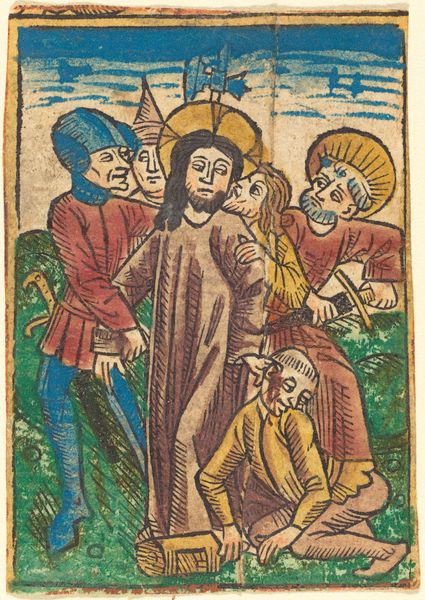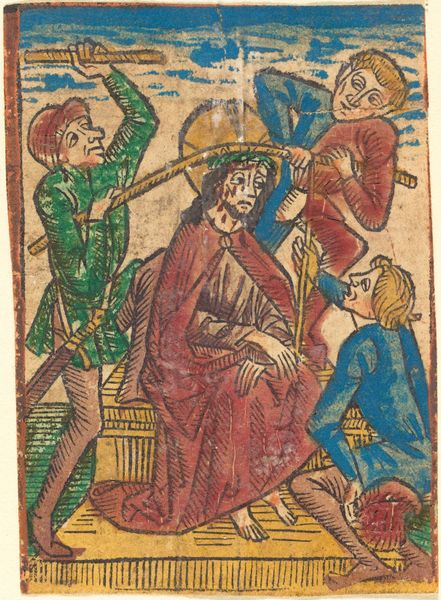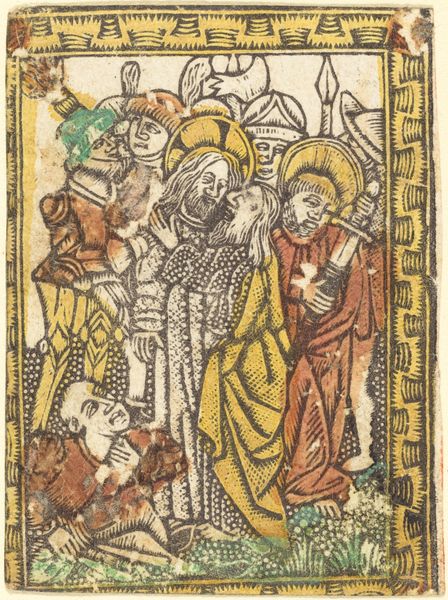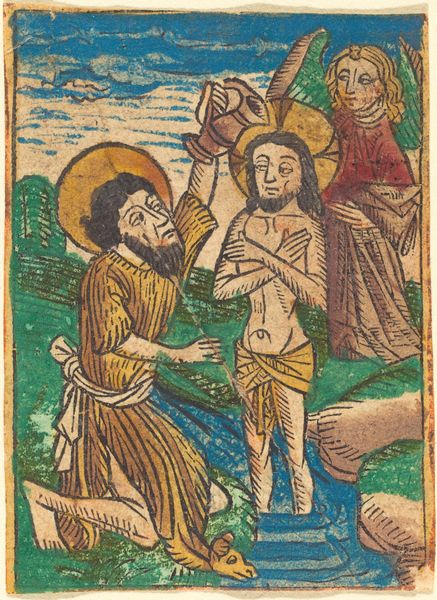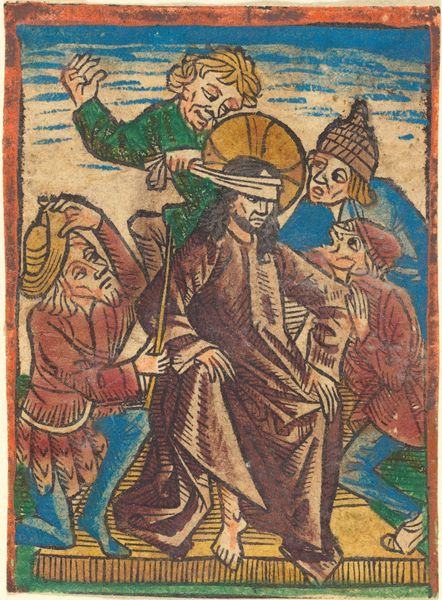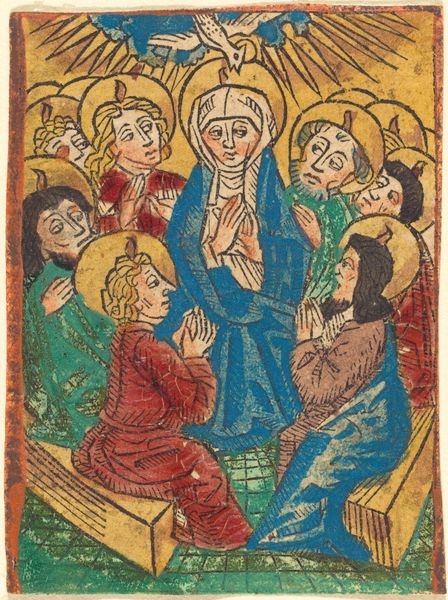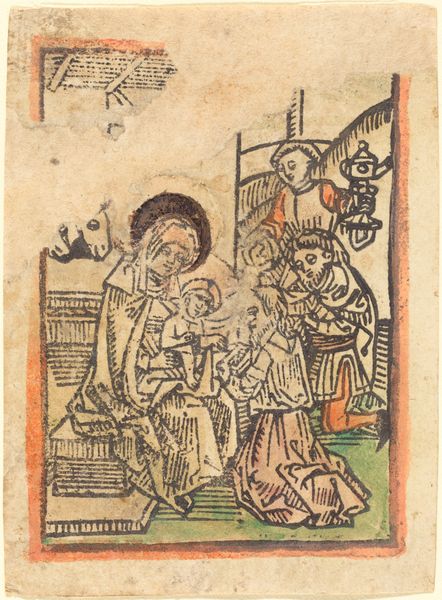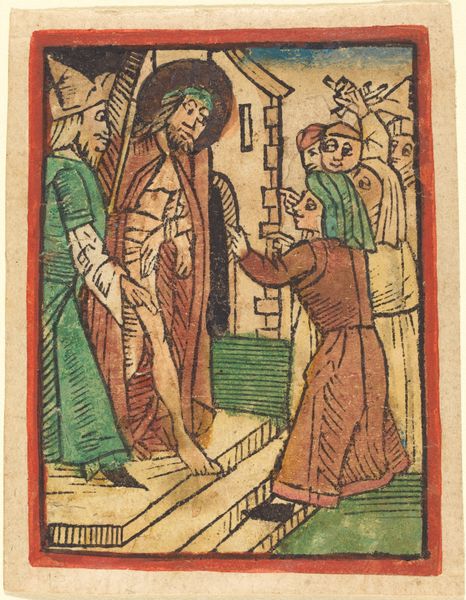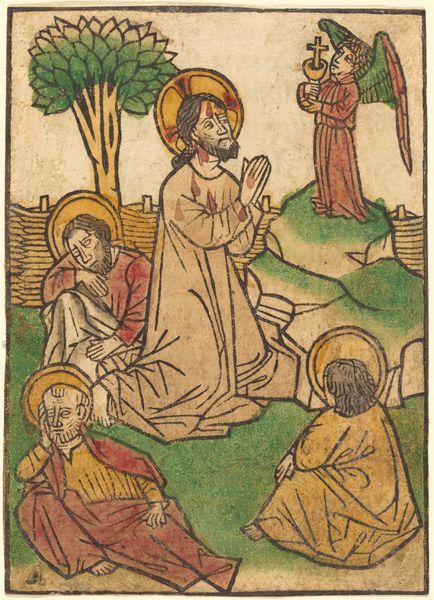
# print
#
stain glass
#
handmade artwork painting
#
fluid art
#
coloured pencil
#
coffee painting
#
naive art
#
tattoo art
#
watercolour illustration
#
coloring book page
#
doodle art
Copyright: National Gallery of Art: CC0 1.0
Curator: Looking at this print, “Christ Bearing the Cross,” dating back to around 1490, likely produced by an anonymous artist, the stark colors against the roughness of the printmaking give it a really raw feel. What stands out to you initially? Editor: Agony. Pure, unadulterated agony etched into Christ’s face and mirrored in the almost grotesque features of the jeering crowd. It feels intensely personal, less about religious dogma and more about human suffering. Curator: The suffering is absolutely central. It's a key symbol here. The cross, the blood—they're potent reminders of Christ's sacrifice, obviously, but notice the expressions of the figures. We have that stark contrast, don't we, between the empathetic faces around Christ and the jeering tormentor. Consider, though, what it represents in the collective unconscious, that idea of persecution and unjust suffering echoing across cultures and throughout history. Editor: Precisely. It becomes a mirror reflecting all those times when power grinds down the powerless. The blue-clad figures to Christ's right, the empathetic ones... their presence adds a bittersweet chord. Even in this theater of cruelty, there's still…pity? Or at least, human recognition. I find myself drawn to their faces more than the central figure even. They are witnessing an injustice, helpless to change the situation. Curator: It makes you question the whole nature of spectatorship, doesn't it? To witness something horrible and feel powerless to intervene. It speaks to a very basic human tension. And the print itself, the medium... it’s so basic, direct, that almost rough feel intensifies that primal emotional connection. This wasn't intended for the elite. Editor: Exactly. It’s designed to punch you right in the gut. There’s no distancing, no layers of abstraction to hide behind. You are confronted, point blank, with the harsh reality. So it is accessible in more ways than one, a potent reminder that even the grandest narratives boil down to the deeply human level. It stays with you. Curator: Absolutely, it's about communal experience of sorrow, pity, injustice. I agree. What stays with me the most is its accessibility—the message cuts right through time. Editor: It feels, oddly enough, relevant. That timeless, heartbreaking truth – those blue clad witnesses. Human connection somehow survives even the worst moments. I’ll carry that thought for a while, I think.
Comments
No comments
Be the first to comment and join the conversation on the ultimate creative platform.
